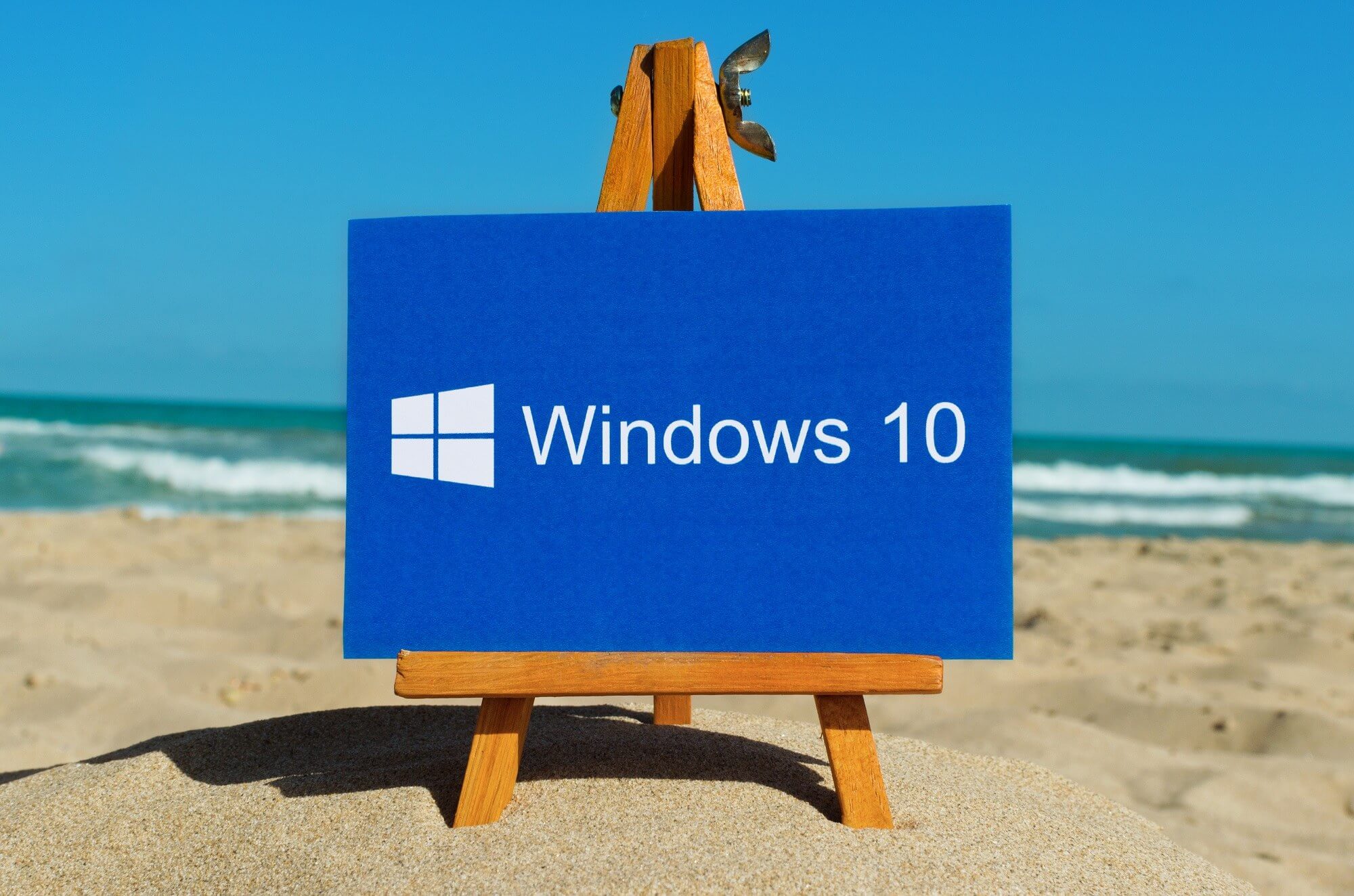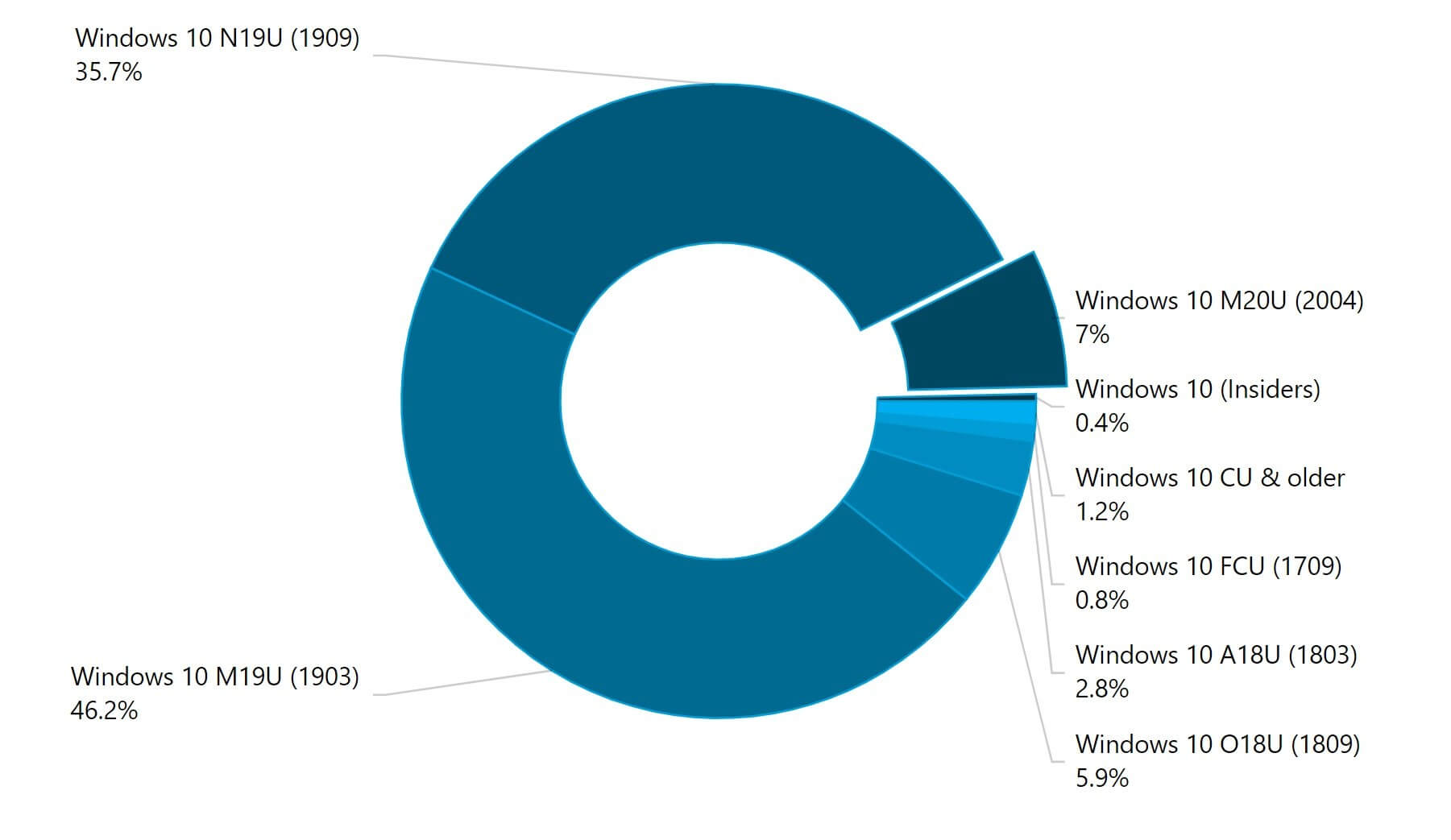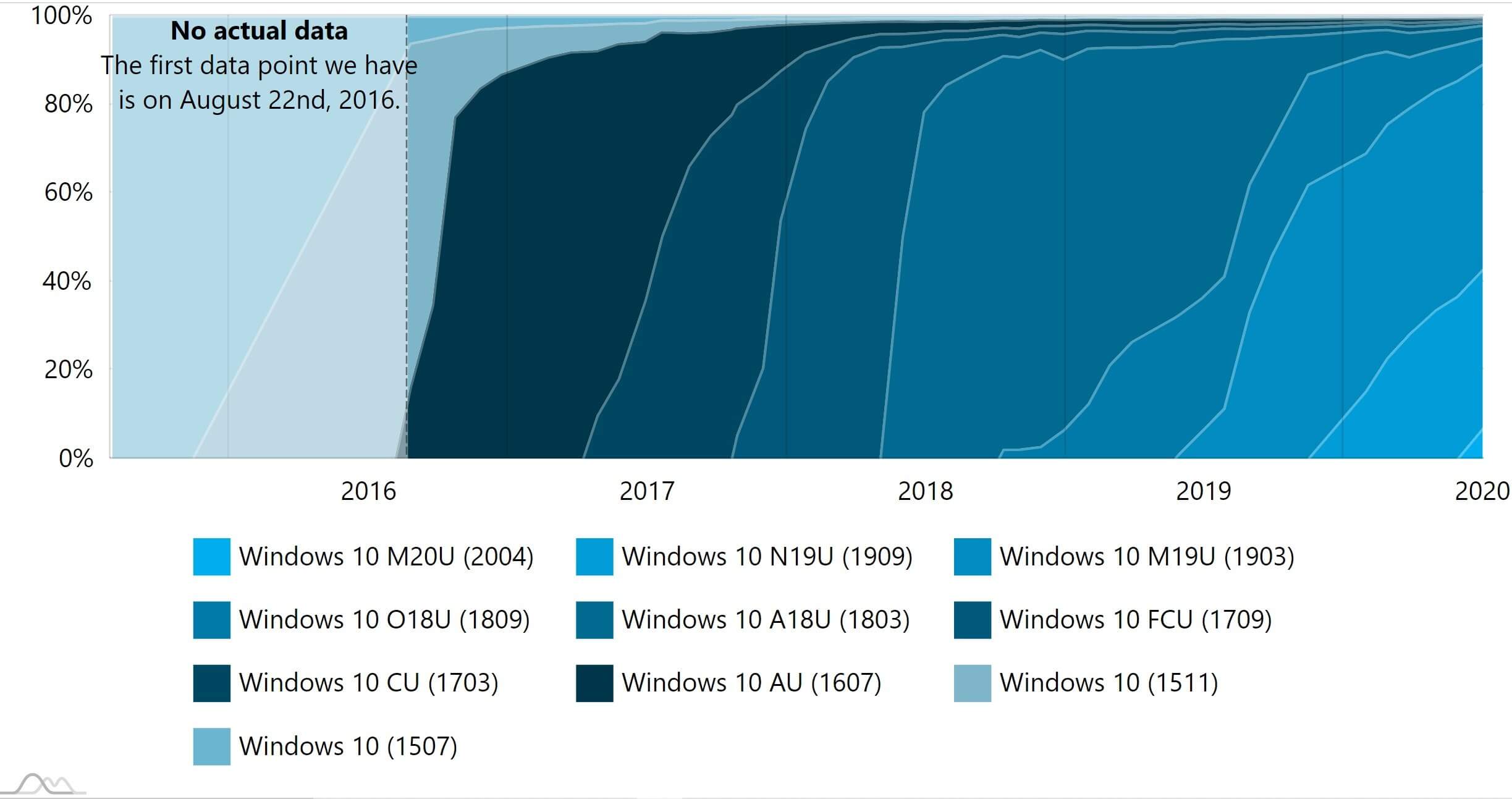In a nutshell: While it's not without problems, Microsoft's Windows 10 May 2020 update (2004) is landing on PCs at a faster rate than its predecessor. A new report shows the update is found on 7 percent of devices after about one month on the market. That's more than what the last major update---May 2019 (1903)---achieved in the same time frame.
The data comes from AdDuplex's monthly report on Windows 10 version usage, which uses close to 150,000 PCs in its survey. It shows that the most popular version of the OS remains the May 2019 (1903) update, which is found on 46.2 percent of PCs and declined by just 2 percent last month. This is followed by last November's cumulative update (1909) that's used by 35.7 percent of people, down by 0.7 percent.
While version 2004's seven percent might not sound like a lot, version 1903 managed just 6.3 percent adoption in its first five weeks.
Windows 10's October 2018 update (1809), which saw its rollout paused for a month so Microsoft could address a bug that was erasing data, fell from 8.3% to 5.9%. That's partly because users on 1809 are now automatically upgraded to 2004 as the former nears its end of life.
AdDuplex also included a graph showing the speed at which Microsoft rolls out its Windows 10 updates. It illustrates the problems version 1809 experienced.
Despite the faster adoption rate, the May 2020 update has not been problem-free. You can see some of the main ones here, though Microsoft has been working to address them.
In related news, we recently heard that the Windows 10 KB4559309 (Edge update) has been slowing some PCs.
Image credit: tanuha2001


